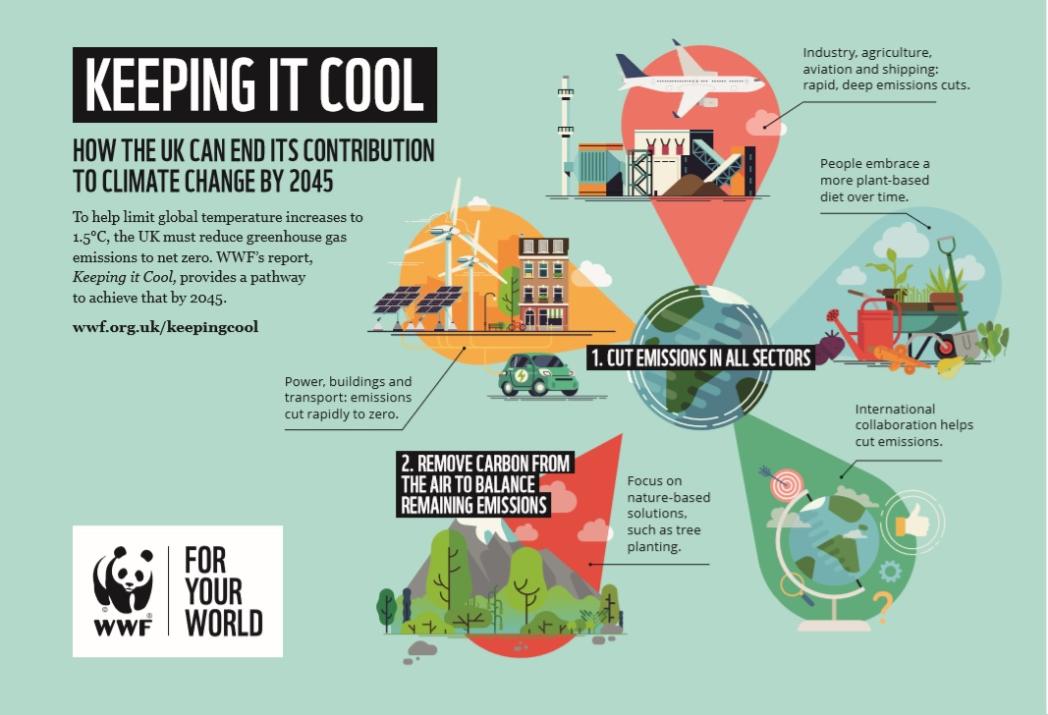WWF’s 2018 Living Planet Report shows just how stark the threat to nature from human activity is, demonstrating a 60% decline, on average, in populations of vertebrate species since 1970. This century has already seen 17 of the 18 hottest years on record alongside more and more climate-related impacts. These are all warning signs from our planet and if we fail to tackle climate change we face costs and consequences; which will only get worse.
The pathways set out here will, inevitably, be modified over time and the path taken will look different when we look back at it from 2045. Innovation and technology development can be swift and unpredictable – as the UK has demonstrated with offshore wind development. Changes in how we live our lives will hasten progress towards net-zero. What is essential is that we confront this challenge head on.


Overall, we need to achieve:
- Zero emissions in several sectors: the power, surface transport and building sectors must reach zero, or near-zero, GHG emissions by 2050.
- Deep cuts in ‘hard to treat’ sectors: industry, shipping and agriculture must significantly reduce their GHG emissions from current levels. Aviation must (at least) maintain emissions to current levels, which will likely require close to zero emissions from domestic aviation.
- International collaboration: To cut emissions from international aviation and shipping, as well as help accelerate innovation in technological solutions.
- Behaviour change: business and governments supporting individuals to make more sustainable choices, such as embracing more plant-based diets.
- Large-scale deployment of greenhouse gas removal (GGR) options: the remaining emissions are compensated by removals using carbon sinks. These include forest growth, but also more technological options such as sustainable bioenergy coupled with carbon capture and storage (BECCS). The scenarios show that we need rapid deployment of GGR technologies at scale, including some (such as direct air-capture of carbon dioxide (DACCS) whose deployability is unclear, and others (BECCS) which come with other environmental risks.
